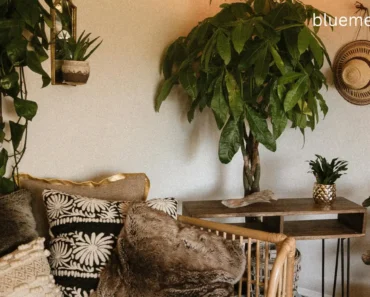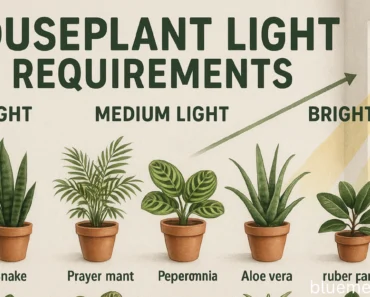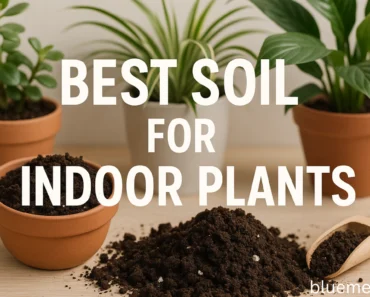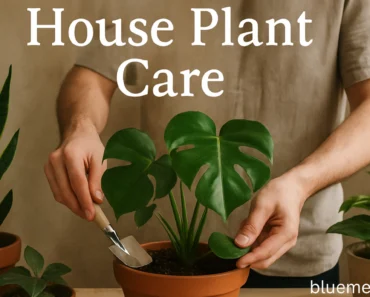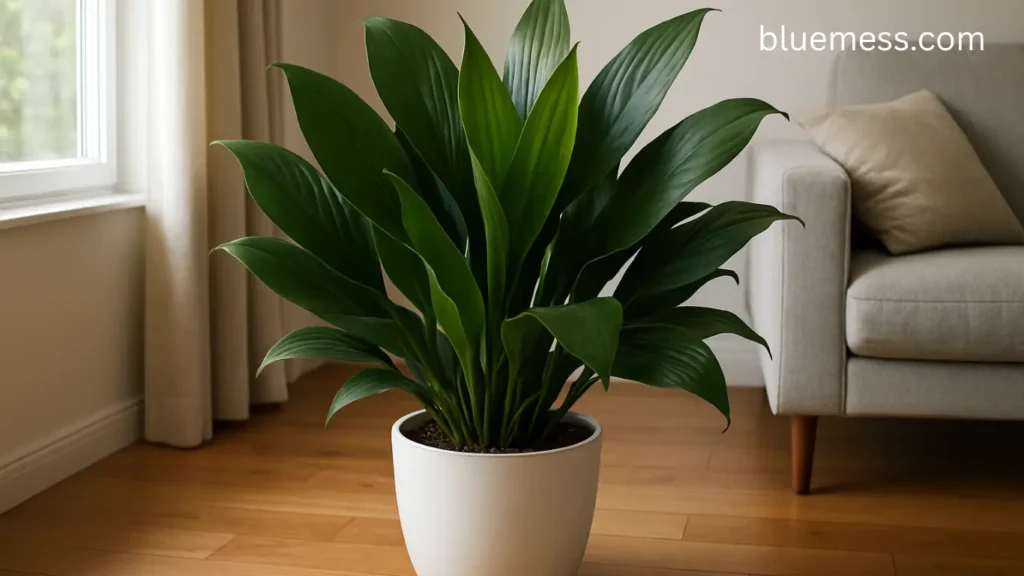
If you’re searching for a houseplant that’s practically indestructible, let me introduce you to the Cast Iron Plant (Aspidistra Elatior) – often called the “Chuck Norris of the houseplant community.” This remarkably resilient plant has earned a reputation as one of the most forgiving houseplants you can grow, making it perfect for beginners or those who occasionally forget about their green friends.
What makes this plant special? It thrives in low light conditions where most plants would struggle, is completely non-toxic to pets and children, and helps purify indoor air. Whether you’re in a dimly lit apartment or need a plant tolerant of neglect, the Cast Iron Plant has your back.
This guide covers all aspects of Cast Iron Plant care—growing needs, common problems, and propagation—so you’ll be ready to grow these resilient plants with confidence.
Table of Contents
- A Quick Look: Cast Iron Plant Basics
- Light Requirements
- Watering Your Cast Iron Plant
- Temperature & Humidity Needs
- Soil & Potting Essentials
- Fertilizing for Optimal Growth
- Pruning & Dusting for Health
- Troubleshooting Common Cast Iron Plant Problems
- Propagating Your Cast Iron Plant
- Placement & Home Decor Ideas
- Is the Cast Iron Plant Pet-Friendly?
- The Unique Benefits & Reputation
- Where to Buy Your Cast Iron Plant
- Conclusion
A Quick Look: Cast Iron Plant Basics {#basics}
The Cast Iron Plant goes by several names including Aspidistra, Bar Room Plant, and Snake Pointer. Native to the tropical forests of East Asia, particularly China, Japan, and Taiwan, this hardy perennial belongs to the Asparagaceae family. Its scientific classification has actually changed over the years, having previously been assigned to Liliaceae, Convallariaceae, and Ruscaceae families.
What truly sets this plant apart is its unparalleled hardiness. Known for tolerating extreme conditions and neglect, it can bounce back from situations that would doom most houseplants. This super tough, very low-maintenance plant features distinctive oblong, deep-green glossy leaves that are sword-shaped and can reach 2-3 feet in height indoors.
While the Cast Iron Plant blooms very rarely indoors, it’s quite a sight when it does. Small, star-shaped bright purple flowers appear near the soil surface, typically lasting just a single day in summer. Afterward, a round fruit with seeds forms. For variety lovers, there are several cultivars available including variegated selections like ‘Asahi’, ‘Okame’, and ‘Snow Cap’, as well as dwarf varieties and hybrids with darker leaves.
Light Requirements {#light}
One of the best features of the Cast Iron Plant is its adaptability to different lighting conditions. It loves shade and thrives in indirect light or darker spots, making it among the lowest-light houseplants you can grow. It’s ideal for indoor spaces with little natural light – those corners where other plants give up.
However, there’s one crucial thing to avoid: direct sunlight. Too much sun can cause scorching or burning on the leaves, so keep your plant at least a few feet away from windows that receive direct sunlight. Think of it as a vampire of the plant world – it prefers the shadows!
If you’ve chosen a variegated variety with beautiful patterns on the leaves, you’ll need to be a bit more careful. While these plants still don’t want direct sun, prolonged deep shade can cause their attractive patterns to disappear. Finding that sweet spot of bright indirect light will keep those patterns vibrant and striking.
Watering Your Cast Iron Plant {#watering}
The key to Cast Iron Plant care is simple: don’t overwater. More plants die from excess water than neglect, as soggy soil quickly leads to root rot.
So when should you water? Only when the first 5cm (about 2 inches) of soil is dry to the touch. This usually works out to about once every two weeks, though during warm seasons you might water 2-3 times per week, while in cold seasons, once a week is often sufficient.
When you water, do so thoroughly and let all excess water drain away completely. Always use a pot with drainage holes – this is non-negotiable for Cast Iron Plant growth! A moisture meter can help if you’re unsure about soil moisture. These plants can survive drought-like conditions, but they look best with consistent watering. If placed in brighter indirect light, water may be used more quickly—adjust your schedule as needed.
Temperature & Humidity Needs {#temperature}
Cast Iron Plants are remarkably tolerant of temperature variations and can adapt easily to different environmental conditions. They tolerate pretty cool temperatures, making them suitable for spaces that might be too chilly for tropical plants. Keep temperatures no lower than 10 degrees Celsius (50°F), though some sources suggest they can tolerate as low as 45°F (about 7°C).
The ideal temperature range for optimal growth is between 15-17 degrees Celsius (59-63°F), with propagated plants doing best at 60-75°F (15-24°C). While they’re tough, avoid exposing them to even short-term frosts, as this can harm the plant.
As for humidity, Cast Iron Plants aren’t overly fussy but appreciate a little extra moisture in the air. You can mist the plant when it’s time to water or if temperatures rise above 20°C (68°F). This simple step can help keep your plant looking lush and healthy.
Soil & Potting Essentials {#soil}
The best soil for Cast Iron Plant growth is a fast-draining mix. You can use standard potting soil mixed with perlite or sand to improve drainage. The plant prefers soil well saturated with organic nutrients, which helps support its slow but steady growth.
If you’re feeling adventurous, create your own DIY soil mix by combining leafy soil, river sand, turf, and humus in a 2:1:2:2 proportion. This creates an ideal growing medium that balances nutrients with drainage.
When potting, always use a container with drainage holes and choose one that’s slightly larger than the root ball – about 2 inches wider works perfectly. A drainage layer at the bottom, such as expanded clay, is essential for preventing water from pooling around the roots.
Repotting should be done sparingly – no more than once every three years. The best time to repot is during the active growing season in spring (March to April), when the plant can recover quickly from the disturbance.
Fertilizing for Optimal Growth {#fertilizing}
During the active growing season from late winter through early fall, your Cast Iron Plant will benefit from regular fertilizing. Use a gentle, all-purpose liquid fertilizer – Dyna-Gro Grow is an excellent choice as it’s a complete, urea-free option. Water-soluble fertilizers containing nitrogen also work well.
For best results, fertilize with a dilute strength at every watering, using about 1/4 to 1/2 teaspoon per gallon of water. Alternatively, if your plant grows in shade, add substrate once every three months; if in a well-lit place, once a month is sufficient.
A word of caution for variegated forms: too much nitrogen can cause these beautiful patterned varieties to turn all green. If you have a variegated Cast Iron Plant, it’s best to avoid heavy feeding to maintain those attractive patterns.
Pruning & Dusting for Health {#pruning}
One of the joys of indoor plant care with Cast Iron Plants is that they require minimal pruning. You’ll only need to remove sick or withered leaves, cutting them off at the soil line. This simple maintenance actually stimulates the growth of new leaves.
Due to their broad leaves, Cast Iron Plants tend to attract dust, which can interfere with photosynthesis and overall plant health. Regularly clean the leaves by wiping them down with a damp sponge or paper towel, or give your plant a gentle shower rinse. Keeping plants free of dust is very important for optimal health and can help prevent pests like spider mites.
Troubleshooting Common Cast Iron Plant Problems {#troubleshooting}
Even the toughest plants can experience issues. Here’s your quick troubleshooting guide:
Brown Leaves/Tips: This indicates your plant is thirsty or the air is too dry. It can also mean the plant is potentially very pot bound and needs repotting.
Yellow Leaves: Usually a sign of overwatering. Let the soil dry out completely before watering again. If root rot has set in, stop watering, treat decay with fungicide, and refresh the substrate.
Scorched Leaves: Caused by too much direct sun. Move your plant to a spot with less intense light immediately.
Loss of Color/Patterns Disappearing: If kept in too dark a place or oversaturated with nutrients (for patterned varieties), bright leaf color may fade. Move to a brighter location and temporarily stop feeding.
Leaves Not Growing: Indicates low nitrogen content in the substrate. A light feeding with diluted fertilizer should help.
Dark Spots on Leaves: Suggests exposure to cold drafts or hypothermia. Cut off affected leaves and move to more favorable conditions.
While Cast Iron Plants are generally pest-resistant, they can occasionally attract spider mites. Regular leaf cleaning helps prevent infestations, and natural pest control methods work well if problems arise.
Propagating Your Cast Iron Plant {#propagating}
Propagating Cast Iron Plants is surprisingly easy and cost-effective. The best time for propagation is during spring and early summer when the plant is actively growing. Division is the primary method, and here’s how to do it:
First, water your plant thoroughly a day or two before dividing. Carefully remove the plant from its pot and gently shake off excess soil to expose the root system. Look for natural separations in the rhizome and use a sterilized sharp knife to cut through, aiming for sections with at least two to three leaves and healthy roots.
Plant each division in fresh, well-draining potting mix, positioning them with the base of leaves just above the soil line. Water thoroughly and place in indirect light. Maintain temperatures between 60-75°F and occasionally mist for humidity. Your new plants will establish themselves within a few weeks.
Placement & Home Decor Ideas {#placement}
Cast Iron Plants excel in dim corners and low natural light areas like hallways, bathrooms, living rooms, bedrooms, or offices. Their slow growth means they won’t overwhelm small spaces, making them perfect for apartments or compact homes.
For outdoor use in zones that stay above freezing year-round, they make excellent perennial groundcover, particularly in hard-to-grow areas under trees. During summer months, you can place indoor plants outside in complete shade to boost growth.
These plants add a touch of elegance with their glossy, deep green leaves, creating a lush, tropical atmosphere indoors. They can serve as a focal point or be grouped with other plants for an eye-catching display, complementing various interior styles from modern minimalist to rustic charm.
Is the Cast Iron Plant Pet-Friendly? {#pet-friendly}
Great news for pet owners! The Cast Iron Plant is completely non-toxic to cats and dogs according to the ASPCA. It’s also safe for children, making it an ideal choice for homes with curious pets or little ones. While many tropical plants have some level of toxicity, the Cast Iron Plant is a welcome exception.
The Unique Benefits & Reputation {#benefits}
Beyond low light tolerance, Cast Iron Plants boast unique benefits: air purification, stress reduction, and a reputation for luck and resilience.
Studies suggest that keeping plants can reduce stress, lower blood pressure, and boost mood. In feng shui tradition, Cast Iron Plants are considered auspicious, believed to ward off bad luck and protect homes from negative energy. As a bonus, their durable foliage can be used in long-lasting cut flower arrangements.
Where to Buy Your Cast Iron Plant {#where-to-buy}
When purchasing a Cast Iron Plant, look for vibrantly colored, deeply emerald, firm leaves with good posture and healthy texture. The soil should not be soaking wet. It’s essential to purchase from a reputable grower rather than generic garden centers.
Premium growers offer several advantages: consistent, plant-specific care rather than one-size-fits-all approaches, prophylactic pest treatment, custom engineered packaging for safe transport, and often lifelong access to plant care support. These factors significantly increase your chances of starting with a healthy plant that will thrive in your home.
Conclusion {#conclusion}
The Cast Iron Plant truly lives up to its reputation as a low-maintenance houseplant that’s perfect for anyone – from complete beginners to experienced plant parents. With tolerance for low light, forgiving watering needs, and a pet-friendly nature, it’s clear why this plant has remained popular for generations.
By following these Cast Iron Plant care guidelines, you’ll enjoy the beauty, resilience, and unique benefits this remarkable plant brings to any home. Whether you place it in that challenging dark corner or use it as a statement piece in your living room, your Cast Iron Plant will reward your minimal efforts with years of lush, green growth.
Ready to add this tough-as-nails beauty to your plant collection? Start your Cast Iron Plant journey today and discover why it’s one of the most beloved houseplants for good reason!
Author
George Wine is a seasoned gardening expert with over 20 years of experience in the field of horticulture. His passion for plants and nature has driven his career, where he has honed his skills in various aspects of gardening, from landscape design to plant care. George holds a Master of Science in Horticulture from the University of California, Davis (UC Davis), a prestigious institution known for its research and advancements in plant science.
Throughout his career, George has worked with a diverse range of clients, offering tailored solutions to enhance outdoor spaces and create thriving gardens. His knowledge and expertise allow him to provide invaluable advice, ensuring that both novice and experienced gardeners achieve their gardening goals. Whether you’re looking for tips on sustainable gardening practices, innovative design ideas, or advice on specific plant species, George is here to help you cultivate the garden of your dreams.

